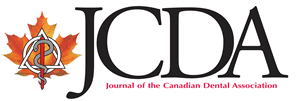 |
Current Issue | Subscriptions | ||||||
| Back Issues | Advertising | |||||||
| More Information | Classified Ads | |||||||
| For Authors | Continuing Education | |||||||
|
||||||||
 |
|
Effect of Illumination on the Accuracy of Identifying Interproximal Carious Lesions on Bitewing RadiographsFULL TEXT
• Paul Deep, BSc, MSc, DMD • A b s t r a c tObjective: To determine if the accuracy of identifying interproximal carious lesions on bitewing radiographs depends on the level of secondary illumination. Methods: Fourteen dentists examined bitewing radiographs of simulated interproximal lesions on dentition phantoms in conditions of maximal secondary illumination (the light condition) and minimal secondary illumination (the dark condition). Results: There was no significant difference (p = 0.07) in the accuracy of identifying simulated interproximal carious lesions on bitewing radiographs in the light mean accuracy (72% ± 12%) and dark (75% ± 12%) conditions. Clinical Significance: Examining bitewing radiographs on a viewbox located in the operatory is adequate for accurately identifying interproximal carious lesions.
MeSH Key Words: dental caries/radiography; lighting; observer variation
Reply to this article | View replies [0]
|
|
|
Full text provided in PDF format |
|
| Mission Statement & Editor's Message |
Multimedia Centre |
Readership Survey Contact the Editor | Français |
|